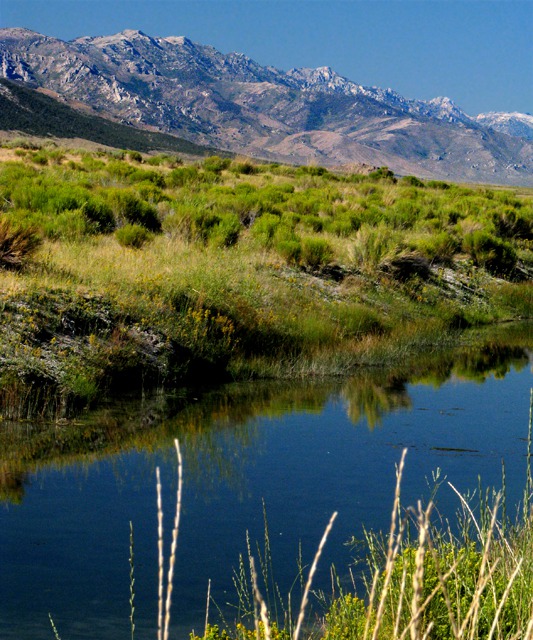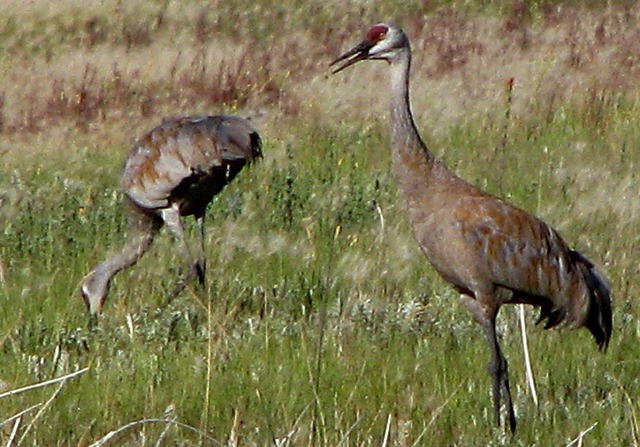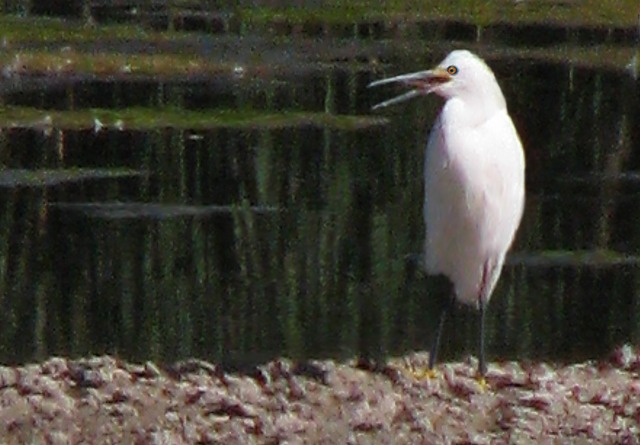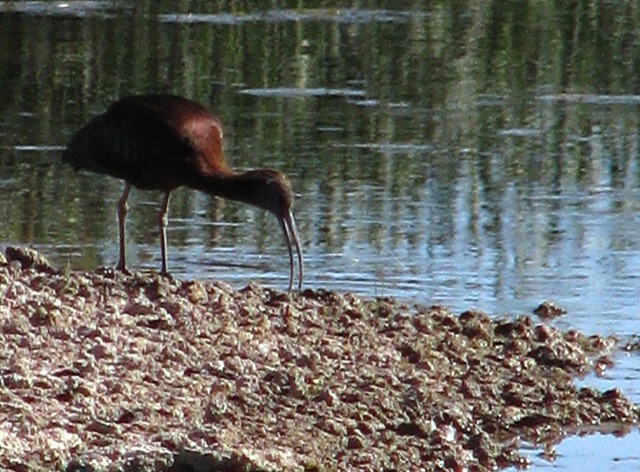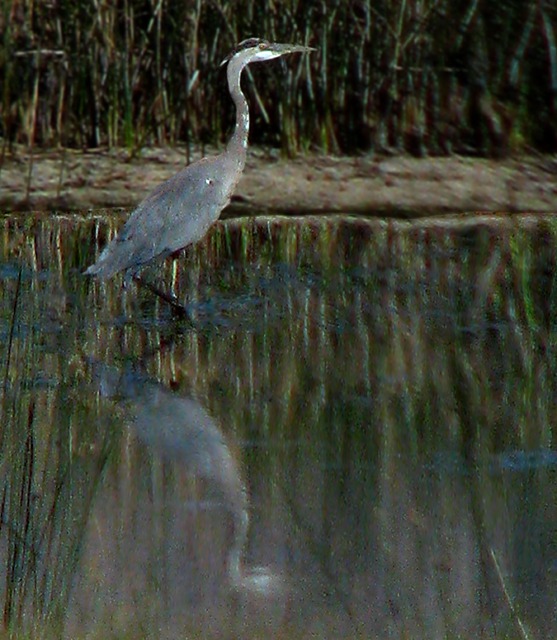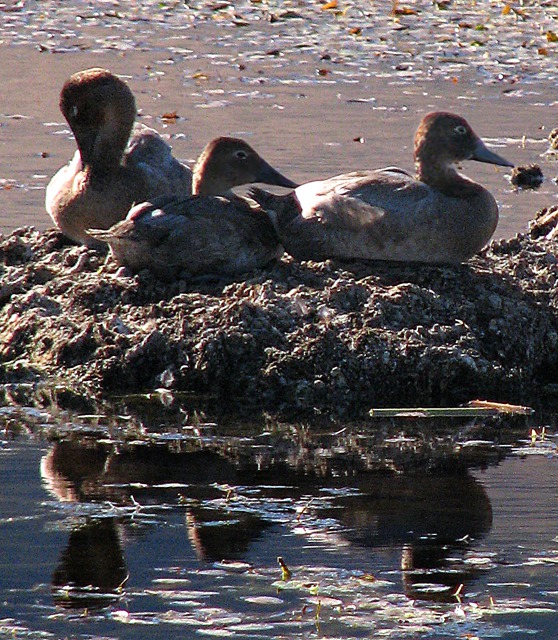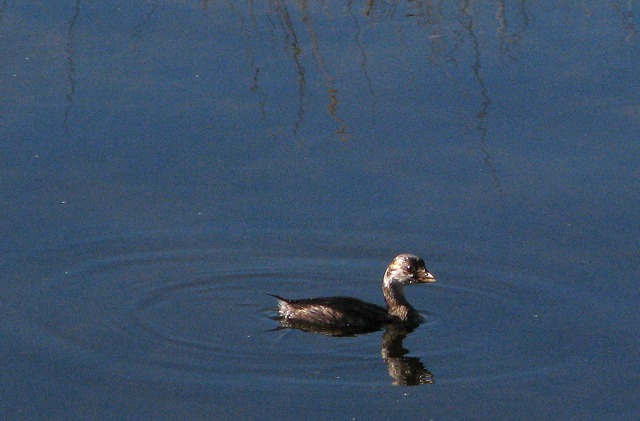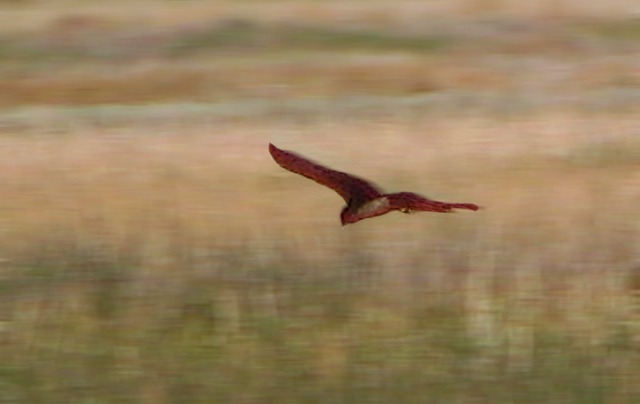Yet Another National Wildlife Refuge: On our summer 2008 odyssey trip from Nevada City CA back to Rapid City SD, we spent a wonderful day exploring dirt (and much worse) roads between Eureka NV and Idaho Falls ID. From Eureka (once known as the "Pittsburgh of the West") we started north on NV HWY 278 along the west slope of the Diamond Mountains.
After a hair-raising adventure in grill-deep dust on a segment of what used to be the Pony Express Trail (that we thought was a road, but it wasn't!), we made our way to NV HWY 718. This gravel road took us over Harrison Pass in the Ruby Mountains to NV HWY 788 and the Ruby Lake National Wildlife Refuge. What an amazing place -- lakes in the otherwise arid Ruby Valley!
Ruby Lake National Wildlife Refuge: The Refuge protects pristine marsh, meadows, grasslands, and shrub-steppe uplands that provide essential habitat for thousands of nesting and migrating waterfowl, water birds, songbirds, and native wildlife.
From the Refuge website: Ruby Lake supports the largest population of nesting Canvasback ducks west of the Mississippi River outside of Alaska. The refuge is at 6,000 feet elevation on the eastern edge of the snow-covered Ruby Mountains. The 17,000 acre marsh is a a remnant of the much larger Ancient Lake Franklin which existed during the Pleistocene Epoch. That lake covered 470 square miles and was over 200 feet deep.
The current Ruby Lake is much smaller and less than five feet deep.
In 1938, President Franklin D. Roosevelt established the Refuge "as a refuge and breeding ground for migatory birds and other wildlife."
The refuge is located along corridors of the Pacific and Central Flyways and is a crossroads for birds migrating westward along the Humboldt River to the Owens Valley in CA, east to Utah's Great Salt Lake, northwest to the Klamath Basin, and south to the Colorado River Valley.
Over 200 springs flow from the base of the Ruby Mountains and provide life-sustaining water to the 39,936 acre refuge. The marsh is surrounded by 22,926 acres of meadows, grasslands, alkali playa, and shrub-steppe uplands.



